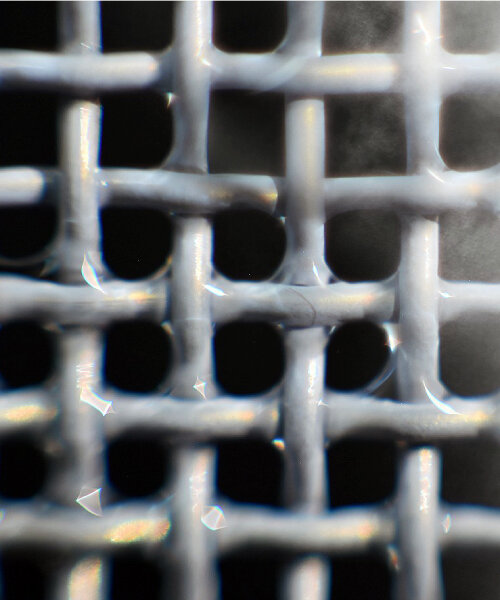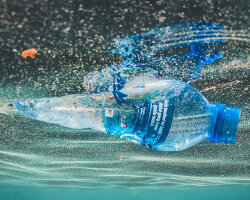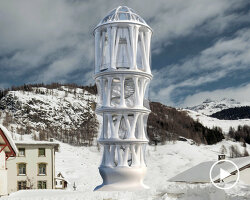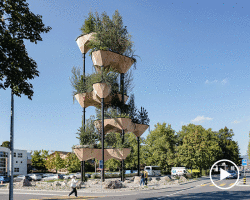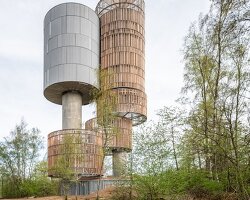Researchers develop fog collecting and converting nets
Researchers at ETH Zurich and the Max Planck Institute for Polymer Research in Mainz have discovered a way to convert fog into liquid while simultaneously purifying it from pollutants to produce clean, drinkable water. They use a closely-meshed lattice of metal wire coated with a mixture of polymers and titanium dioxide. The polymers efficiently capture water droplets on the mesh and facilitate their rapid drainage into a container before the wind can blow them away. The titanium dioxide plays a crucial role in the chemical process, breaking down the molecules of various organic pollutants present in the droplets to cleanse and purify them.
The result is clean, drinkable water achieved through chemical reactions and processes. The researchers claim that their technology may require minimal maintenance and energy, thanks to the materials used and its reliance on solar panels for power. Just half an hour of sunlight can reactivate the titanium dioxide for an additional 24 hours, thanks to a property known as photocatalytic memory. Their research joins a growing number of ways to capture fog and produce clean water, including the expandable Fog-x backpack by Pavels Liepins and the CloudFisher net.
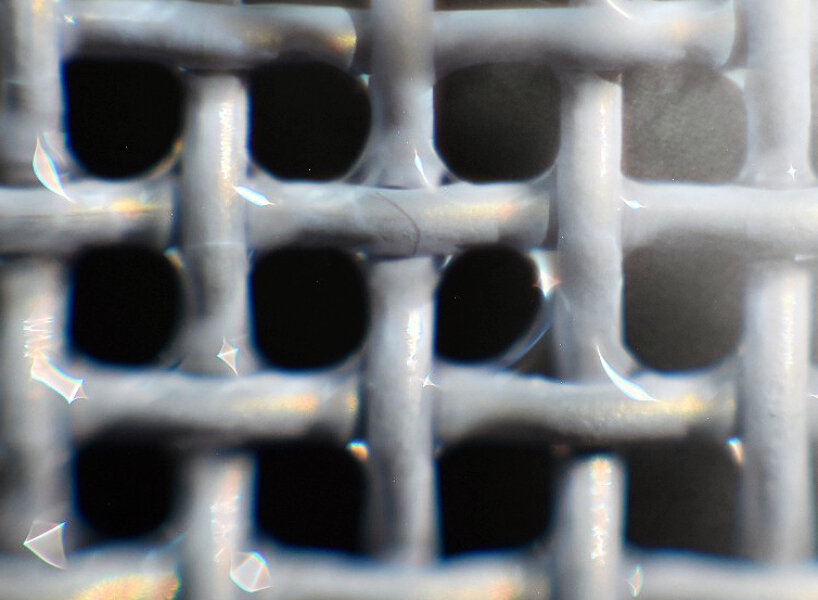
images by researchers at ETH Zurich and Max Planck Institute for Polymer Research in Mainz
From polluted fog to drinkable clean water
The researchers – composed ofRitwick Ghosh, Adrien Baut, Giorgio Belleri, Michael Kappl, Hans-Jürgen Butt, and Thomas M. Schutzius – have already tested the nets in a laboratory and a small pilot plant in Zurich. Based on their studies, they were able to collect eight percent of the water from the nets and break down 94 percent of the harmful compounds that would have rendered it undrinkable or unusable. These pollutants included extremely fine diesel droplets and the chemical bisphenol A, a hormonally active agent.
Along with clean water, the technology can also be employed to recover water from cooling towers. Thomas M. Schutzius explains, ‘In cooling towers, steam escapes into the atmosphere. It would make sense to capture some of that water before it escapes and ensure it’s pollutant-free if you want to reintroduce it into the environment.’ These nets, capable of converting and purifying fog into clean, drinkable water, can be deployed in regions where fog is prevalent, such as Peru, Bolivia, Chile, Morocco, and Oman, thereby enabling access to clean water for daily use.
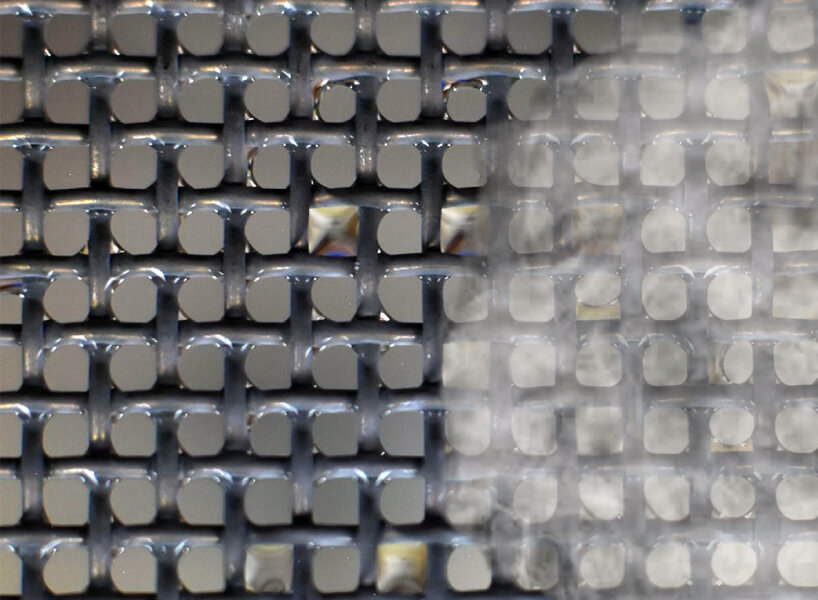
image by Thomas Schutzius
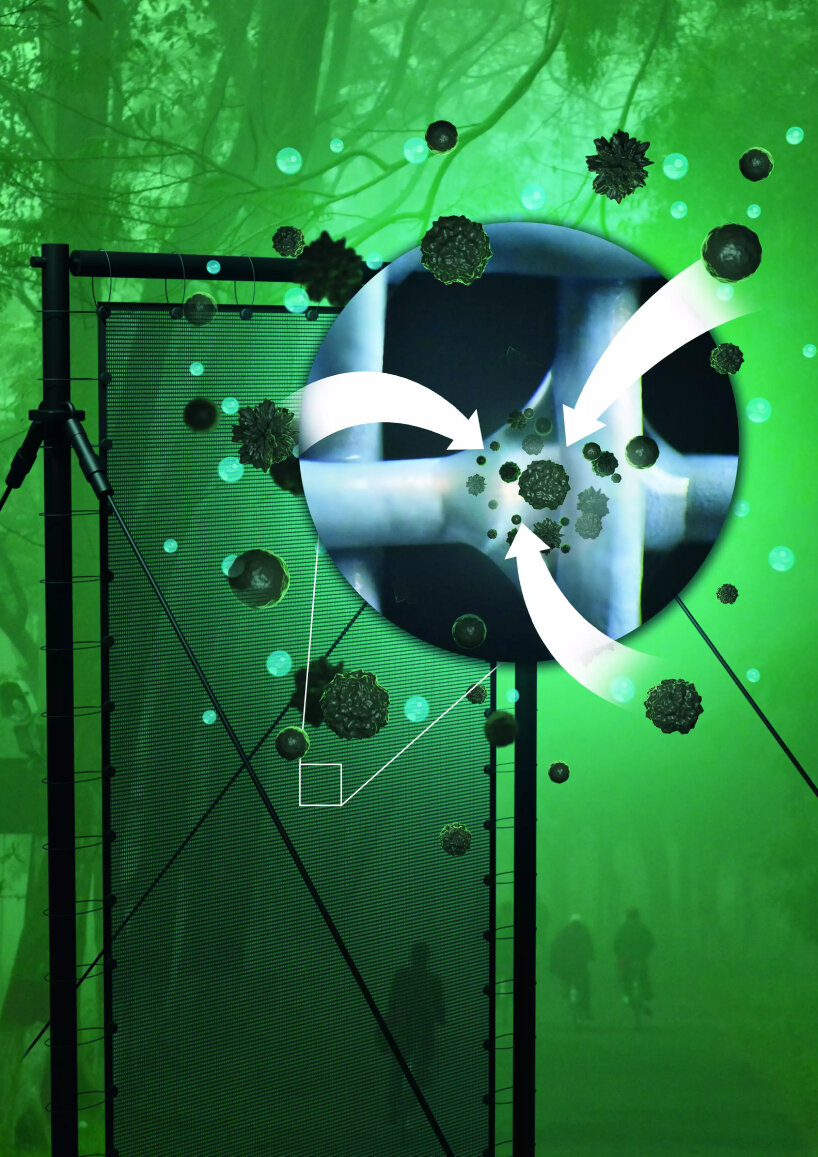
visuals of how the nets can purify the fog to produce clean water

CloudFisher turns fog into drinking water in Morocco’s driest regions | read the full story here

the researchers use metal wire coated with polymers and titanium dioxide

the chemical-infused metal wire can convert and purify the fog the nets collect into clean water

expandable Fog-x backpack by Pavels Liepins harvests fresh water from thin air | read the full story here
project info:
name: Fog collecting nets
team: Ritwick Ghosh, Adrien Baut, Giorgio Belleri, Michael Kappl, Hans-Jürgen Butt, and Thomas M. Schutzius
institutions: ETH Zurich, Max Planck Institute for Polymer Research
